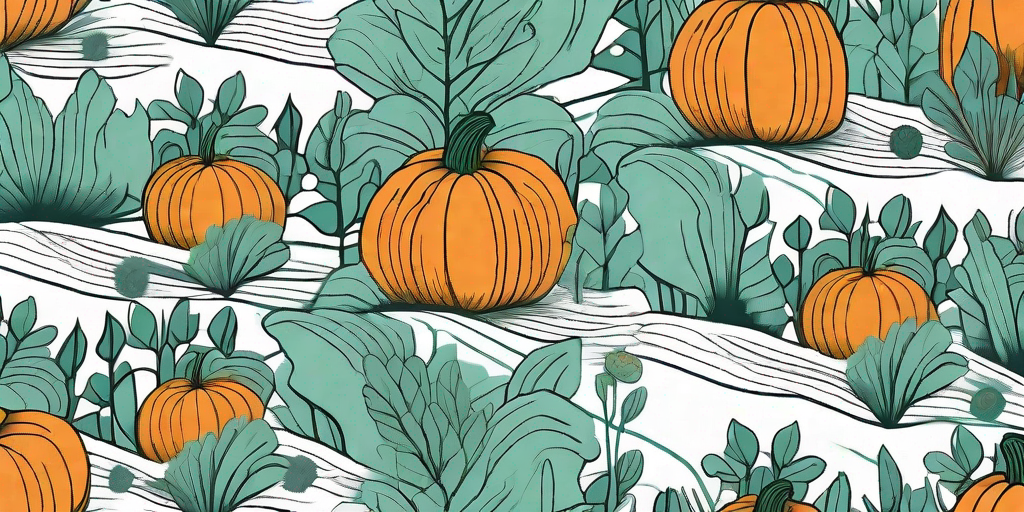
When it comes to planting pumpkins, it's not just about digging a hole and hoping for the best. No, no, no! It's a delicate dance of soil, sunlight, and companionship. Yes, you read that right, companionship! Just like you and your best mate, pumpkins thrive when they're in good company. But who are these green-thumbed companions, you ask? Well, let's dive right in and find out!
The Art of Companion Planting
Companion planting is like the speed dating of the gardening world. It's all about finding the perfect match for your plants to help them grow stronger and healthier. But it's not just about playing matchmaker. Companion planting also helps to maximize your garden space, improve your soil, and even control pests. Now, that's what we call a win-win-win situation!
But before you start playing Cupid in your garden, it's important to understand that not all plants play nice together. Some plants are like the grumpy old men of the garden, preferring to keep to themselves. Others, however, are the life of the party and get along with just about everyone. The trick is knowing who's who.
Pumpkins and Their Perfect Companions
Now, let's get down to the nitty-gritty. Which plants make the best companions for pumpkins? Well, pumpkins are pretty sociable plants, but they do have their favorites. These include corn, beans, and marigolds. Yes, marigolds! Who would have thought that these little flowers could be such good friends with a giant pumpkin?
But it's not just about friendship. Each of these plants brings something unique to the table. Corn provides a natural trellis for pumpkins to grow on, beans enrich the soil with nitrogen, and marigolds deter pesky pests. It's like the ultimate gardening dream team!
Corn: The Supportive Friend
Corn and pumpkins go together like peas and carrots. The tall, sturdy stalks of the corn provide the perfect support for the sprawling vines of the pumpkin. This not only helps to save space in your garden but also keeps the pumpkins off the ground, reducing the risk of rot and disease. Now, that's what we call a supportive friend!
But it's not just about physical support. Corn also helps to create a microclimate that pumpkins love. The tall stalks shade the pumpkins from the harsh afternoon sun, while the large leaves trap moisture in the air. It's like a little pumpkin paradise!
Beans: The Nutrient Booster
Beans are the nutrient boosters of the garden world. They have the amazing ability to fix nitrogen from the air and convert it into a form that plants can use. This is a big deal because nitrogen is one of the key nutrients that plants need to grow. It's like a natural fertilizer!
But beans don't just boost the soil's nitrogen levels. They also help to improve the soil structure, making it easier for pumpkin roots to penetrate the soil and access the nutrients they need. Plus, the beans' sprawling vines help to suppress weeds, giving your pumpkins a little extra breathing room.
Marigolds: The Pest Deterrent
Marigolds are the bouncers of the garden world. They're known for their ability to deter a wide range of pests, including nematodes, beetles, and even rabbits. This is thanks to their strong scent, which pests find off-putting. It's like a natural pest control!
But marigolds don't just deter pests. They also attract beneficial insects, like bees and butterflies, which help to pollinate your pumpkins. Plus, their bright, cheerful flowers add a splash of color to your garden. Who said pest control couldn't be pretty?
FAQs
Can I plant other flowers with my pumpkins?
Absolutely! Pumpkins love company, and there are plenty of flowers that make great companions. Nasturtiums, for example, are known for their ability to deter pests, while sunflowers provide a natural trellis for pumpkin vines to climb on. Just remember, not all flowers are pumpkin-friendly, so do your research before you start planting.
Do I need to rotate my pumpkin crop?
Yes, crop rotation is an important part of maintaining a healthy garden. By rotating your crops, you can help to prevent the build-up of pests and diseases in your soil. Plus, different plants use different nutrients, so by rotating your crops, you can help to maintain a balanced soil nutrient profile.
What's the best time to plant pumpkins?
Pumpkins are warm-season crops, which means they love the heat. The best time to plant pumpkins is after the last frost in spring when the soil has warmed up. Just remember, pumpkins need a long growing season, so make sure you give them plenty of time to mature before the first frost in fall.
Conclusion
So there you have it, folks! The secret to growing pumpkins isn't just about the right soil or the right amount of sunlight. It's about finding the perfect companions for your pumpkins. So next time you're planting pumpkins, don't forget to invite corn, beans, and marigolds to the party. Your pumpkins will thank you for it!
Happy gardening!











